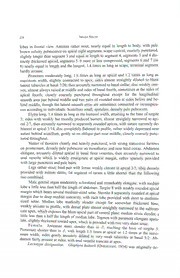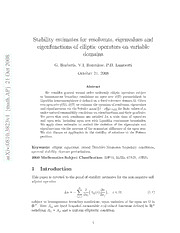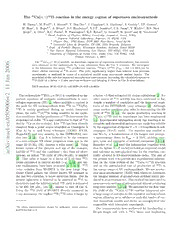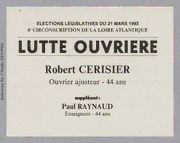
Economic interdependence and war PDF
Preview Economic interdependence and war
Economic Interdependence and War Princeton Studies in International History and Politics Series Editors G. John Ikenberry, Marc Trachtenberg, and William C. Wohlforth Recent Titles Economic Interdependence and War by Dale C. Copeland Knowing the Adversary: Leaders, Intelligence, and Assessment of Intentions in International Relations by Keren Yarhi-M ilo Nuclear Strategy in the Modern Era: Regional Powers and International Conflict by Vipin Narang The Cold War and After: History, Theory, and the Logic of International Politics by Marc Trachtenberg Liberal Leviathan: The Origins, Crisis, and Transformation of the American World Order by G. John Ikenberry Worse Than a Monolith: Alliance Politics and Problems of Coercive Diplomacy in Asia by Thomas J. Christensen Politics and Strategy: Partisan Ambition and American Statecraft by Peter Trubowitz The Clash of Ideas in World Politics: Transnational Networks, States, and Regime Change, 1510– 2010 by John M. Owen IV How Enemies Become Friends: The Sources of Stable Peace by Charles A. Kupchan 1989: The Struggle to Create Post– Cold War Europe by Mary Elise Sarotte The Struggle for Power in Early Modern Europe: Religious Conflict, Dynastic Empires, and International Change by Daniel H. Nexon Strong Borders, Secure Nation: Cooperation and Conflict in China’s Territorial Disputes by M. Taylor Fravel The Sino- Soviet Split: Cold War in the Communist World by Lorenz M. Lüthi Nuclear Logics: Contrasting Paths in East Asia and the Middle East by Etel Solingen Social States: China in International Institutions, 1980– 2000 by Alastair Iain Johnston Appeasing Bankers: Financial Caution on the Road to War by Jonathan Kirshner The Politics of Secularism in International Relations by Elizabeth Shakman Hurd Unanswered Threats: Political Constraints on the Balance of Power by Randall L. Schweller Producing Security: Multinational Corporations, Globalization, and the Changing Calculus of Conflict by Stephen G. Brooks Driving the Soviets up the Wall: Soviet– East German Relations, 1953– 1961 by Hope M. Harrison Economic Interdependence and War Dale C. Copeland P r i n c e to n U n i v e rs i t y P r e s s Princeton and Oxford Copyright © 2015 by Princeton University Press Published by Princeton University Press, 41 William Street, Princeton, New Jersey 08540 In the United Kingdom: Princeton University Press, 6 Oxford Street, Woodstock, Oxfordshire OX20 1TW press.princeton.edu Jacket art: Auguste Étienne François Mayer, The Redoutable at the Battle of Trafalgar, 1836. Photo: Bulloz. Musée de la Marine, France. © RMN-Grand Palais/Art Resource, NY All Rights Reserved ISBN 978- 0- 691- 16158- 7 ISBN (pbk.) 978- 0- 691- 16159- 4 British Library Cataloging- in- Publication Data is available This book has been composed in Sabon Next LT Pro Printed on acid- free paper. ∞ Printed in the United States of America 10 9 8 7 6 5 4 3 2 1 Contents Preface vii Abbreviations xi Introduction 1 Chapter one: Theory of Economic Interdependence and War 16 Chapter two: Quantitative Analysis and Qualitative Case Study Research 51 Chapter three: The Russo-J apanese War and the German Wars for Hegemony, 1890– 1939 97 Chapter four: The Prelude to Pearl Harbor: Japanese Security and the Northern Question, 1905– 40 144 Chapter five: The Russian Problem and the Onset of the Pacific War, March– December 1941 184 Chapter six: The Origins, Dynamics, and Termination of the Cold War, 1942– 91 247 Chapter seven: European Great Power Politics, 1790– 1854 319 Chapter eight: Great Power Politics in the Age of Imperial Expansion, 1856– 99 375 Chapter nine: Implications of the Argument 428 Bibliography 447 Index 473 Preface This is a book with multiple layers, and hence one that can be read from a number of angles. First and foremost, it is exploration of the condi- tions under which trade and investment flows are likely to push great powers either toward peace or toward militarized conflict and war. At another level, however, it is an investigation into the ways great powers think about economic exchange, and the role it plays in their efforts to build global power and long-t erm security. Finally, the book constitutes a study of the relative causal salience of commercial versus noncommercial forces in the movement of modern world history. In the latter sense, it is part of a larger effort to determine just how often competing theories of war, both economic and noneconomic, effectively explain shifts from interstate peace to dangerous crises and war, or from ongoing cold wars to stable peace. By covering the essential universe of great power cases from 1790 to 1991, the book provides the first major test of the relative importance of competing causal factors across the sweep of diplomatic history. The findings of this book should thus be of interest to historians as well as international relations scholars. Yet by also considering the cutting- edge work of quantitative scholars, the study shows the larger implications of the book’s argument for a broad cross-s ection of nations, both large and small. Because the attempt to cover two hundred years of great power his- tory makes for a long book, different audiences will want to read this work in different ways. Readers with a primary interest in international relations theory and political science will want to explore the first three chapters carefully, and then pick and choose cases of particular inter- est from chapters 3 to 8. Readers whose main interests are rooted in diplomatic history need only read the first half of the introductory chap- ter before plunging directly into the case studies and the discussion of contemporary Sino- American relations in the final chapter. I have placed the European cases from 1790 to 1899 near the end of the book simply because there are fewer extant documents for this period, which tends to constrain our ability to test the relative validity of competing causal mechanisms. Nevertheless, a reader with a preference for chronology could start with chapters 7 and 8, and then return to chapters 3 to 6 to cover the cases of the tumultuous twentieth century. Like its subject matter, this is a book with a long history, and there are many people to thank. I first want to express my appreciation to those viii • Preface individuals who offered comments at workshops on early versions of individual chapters, and whose names I may not have known at the time or have subsequently forgotten. This includes workshops at the Center for International Affairs at Harvard University, the Belfer Center for Sci- ence and International Affairs at Harvard, the Program on International Peace, Economics, and Security at the University of Chicago, the Mer- shon Center at Ohio State University, the departments of political sci- ence at Columbia University and George Washington University, and the Department of Government at Georgetown University. I especially want to thank the Lone Star Forum, a consortium of Texas universities, for a weekend setting that facilitated a fertile discussion of key sections of my close- to- finished manuscript. The comments from the participants there helped me fix a number of errors just before the manuscript went out for review. For helping me work through the bugs in the original theoretical setup, I wish to thank Bob Art, James Fearon, Hein Goemans, Andrew Kydd, Jack Levy, Charles Lipson, Michael Mastanduno, John Mearsheimer, Ido Oren, Duncan Snidal, and Stephen Walt. For valuable advice on specific chapters and my methodological approach, thanks go to Debo- rah Boucayannis, Tim Crawford, Mike Desch, Dan Gingerich, Eugene Gholz, David Leblang, Jeff Legro, Steven Lobell, Allen Lynch, Ed Mans- field, Kevin Narizny, John Owen, Sonal Pandya, Norrin Ripsman, Len Schoppa, Herman Schwartz, Randy Schweller, Todd Sechser, Jeff Talia- ferro, David Waldner, and Brantly Womack. At the University of Virginia, I was fortunate to work with a number of smart graduate students who offered incisive comments at various stages of this book’s development: Karen Farrell, Kyle Haynes, Derek King, Kyle Lascurettes, Tom Moriarty, Carah Ong, Joseph Riley, Matt Scroggs, Yu Jin Woo, and Brandon Yoder. Here I especially offer my gratitude to Michael Poznansky for his pen- etrating critiques across many of the book’s chapters. At Princeton University Press, I greatly appreciate the help of Marc Trachenberg and John Ikenberry, editors of the Princeton Studies in In- ternational History and Politics series, for their strong support of this project from the get-g o. Eric Crahan and his forerunner, Chuck Myers, were everything one could want in a general editor. I must also thank John Haslam of Cambridge University Press for his support during the review process. Although an author can (unfortunately) only publish a book with one press, John’s sustained encouragement and interest in the project will always be remembered. Finally, I want to acknowledge the anonymous reviewers at both Prince- ton University Press and Cambridge University Press for extensive as well as constructive comments. Their insightful suggestions helped me correct a number of flaws, leading to what I hope is now a much-i mproved final Preface • ix product. One of these reviewers, who later revealed himself to be Frank Gavin, provided especially helpful thoughts on the broader diplomatic- historical implications of the project. My parents, Clare G. Copeland and Barbara E. Copeland, deserve a spe- cial note of appreciation. They both passed away before they could see the book in print. But their unswerving support over the many years it took me to write it leaves me grateful beyond words. I dedicate this book to my wonderful partner, Natasha Copeland, and my two incredible kids, Liam and Katya. Simply put, you are what make life worthwhile.
The list of books you might like

Atomic Habits James Clear

The 48 Laws of Power

As Good as Dead

The Subtle Art of Not Giving a F*ck

The Foundations of Modern Macroeconomics

Ite missa est, Op.6

The Occult Sciences in Byzantium

Chandamama 2006 2 Www. Rips Tracker.com

Hermann Hesse Today - Hermann Hesse Heute

Computer Vision in Control Systems-3: Aerial and Satellite Image Processing

Terapias comportamentais de terceira geração: guia para profissionais

Head First Excel
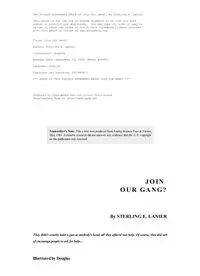
Join Our Gang by Sterling E Lanier
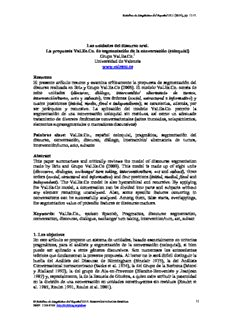
Las unidades del discurso oral
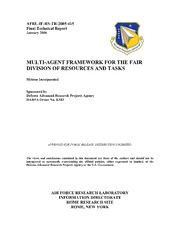
DTIC ADA444182: Multi-Agent Framework for the Fair Division of Resources and Tasks

NASA Technical Reports Server (NTRS) 20060020768: Extravehicular Mobility Unit (EMU) / International Space Station (ISS) Coolant Loop Failure and Recovery

JIS X 8341-4: Guidelines for older persons and persons with disabilities?-- Information and communications equipment, software and services -- Part 4: Telecommunications equipment

Report of the Commission on Retirement Security and Personal
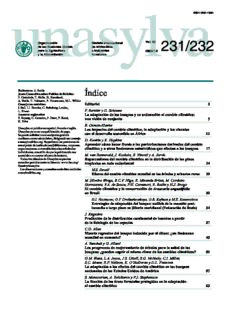
Cambio climático y productos forestales no madereros

